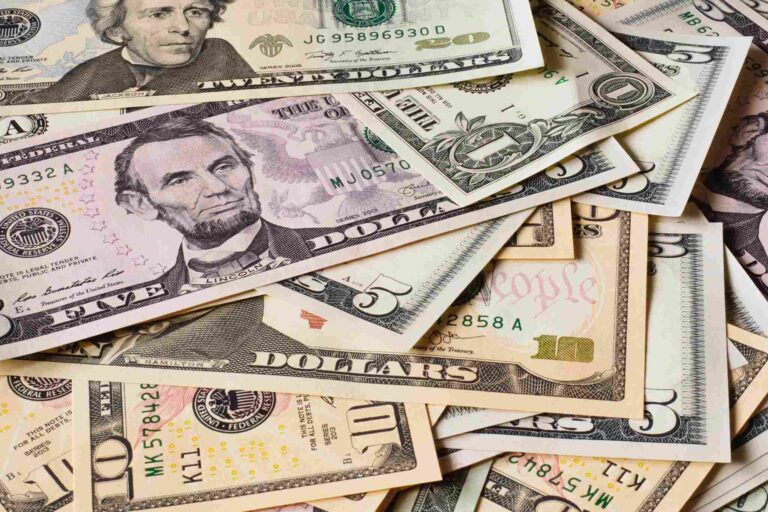Do you know what makes a currency stable? Or why are certain currencies considered more secure and reliable than others?
With the world economy becoming increasingly intertwined and interconnected, it is important to understand which currencies are most stable in terms of value and longevity.
In this article, we will explore the top 10 most stable currencies in the world and the factors contributing to their stability.
Table of Contents
When is a currency said to be “stable”?
When a currency’s value is steady throughout time, it is said to be stable. This indicates that it is not very volatile and can be relied upon as a trustworthy medium of exchange. A currency’s stability is influenced by various variables, including the size of a nation’s export industry, economic policies, and level of international recognition.
A robust export sector helps to guarantee that a currency is backed by tangible goods and services, and economic measures like low inflation aid in maintaining the currency’s value over time. Global adoption also greatly influences currency stability since widely utilized currencies tend to hold their value better than less popular ones.
Also, some nations attract foreign investment by offering interest rates that are more enticing, which aids in the stability of their currency. Ultimately, a solid financial and governmental structure also contributes significantly to the stability and dependability of a currency. Together, these elements ensure that a currency can maintain its value through time and be stable for use in international trade.
Read also: The strongest currencies by value in early 2023
Top 10 most stable currencies
Are you looking for financial stability in turbulent times? If so, you may want to learn about the top 10 most stable currencies. From the Swiss Franc to the Australian Dollar, these are some of the best currencies to hold if you want reliable returns and consistent value.
1. United States Dollar (USD)
The world’s most widely used and powerful currency is the US Dollar. It is widely utilized as a reserve currency by many nations and is widely accepted across the whole world, especially in international trade and investment, due to its remarkable stability against recession, inflation, and economic crises.
2. Australian Dollar (AUD)
When the economy is unstable, the Australian Dollar is seen as a safe haven currency. It has regularly outperformed other currencies and is supported by the country’s robust export industry, which includes the production of commodities like iron ore, coal, and gold.
3. Swiss Franc (CHF)
The Swiss Franc, supported by renowned Swiss financial secrecy, is the most stable currency in the world. It has shown to be resilient in times of economic upheaval, and its value versus other currencies remains constant.
4. Japanese Yen (JPY)
One of the most widely traded currencies in the world and a solid reserve currency is the Japanese Yen. Its strength stems from the robust economy of Japan, and it is one of the few currencies that has maintained its value against the US Dollar throughout tumultuous times.
5. Canadian Dollar (CAD)
Due to its consistency and dependability throughout difficult economic times, the Canadian Dollar is a highly prized currency. Canada’s wide export market contributes to its stability.
6. Norwegian Krone (NOK)
One of the safest and most trustworthy currencies in Europe is the Norwegian Krone. Natural resources like oil and gas contribute to Norway’s prosperity, which helps to protect its currency from general financial instability.
7. European Euro (EUR)
The Euro, which serves as the European Union’s official currency, has developed into one of the strongest and most stable global currencies. Its value is exceptionally robust and its strength stems from the numerous member countries supporting it.
8. British Sterling Pound (GBP)
The UK’s robust export economy serves as a support for the British Pound’s strength. Due to its wide acceptability and its rather conservative economic policies, its value tends to be steady in comparison to other major currencies.
9. Singapore Dollar
One of Asia’s safest and most dependable currencies is the Singapore Dollar. Its value versus other currencies is largely stable and depends by Singapore’s robust export market.
10. Danish Krona (DKK)
The strong export market of Denmark serves as a support for the Danish Krona, which is the country’s legal tender. It is one of the most stable currencies in Europe, and in comparison to other significant currencies, its value has remained largely unchanged.
Why is the United States Dollar the most stable currency?
The United States Dollar (USD) has wide recognition of being the most stable currency in the world due to its relative strength and stability.
The US Dollar has been used for international trade since at least 1792. And is the official currency of most countries in the world, including all of North America. The stability of the US Dollar comes down to two main factors. Namely, its strong economy and its status as a reserve currency.
The United States has one of the largest economies in the world. It has low unemployment rates and a large Gross Domestic Product (GDP). This makes the US Dollar a safe and reliable investment, as it is unlikely to significantly depreciate in value.
The US Dollar has also been more stable than most other currencies because of the Federal Reserve’s monetary policies, which help keep inflation in check and limit currency devaluation. The Federal Reserve works to maintain a stable and reliable currency.
Thus, by keeping its interest rates competitively low to maintain economic growth. This helps to ensure that the US Dollar maintains its value over time and provides a sense of stability for investors who are looking to make long-term investments in the currency.
Read also: Brazil and Argentina may have a single currency: what is the “Sur” project












